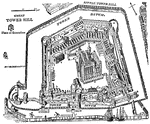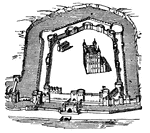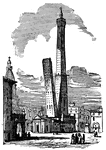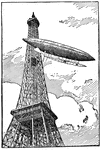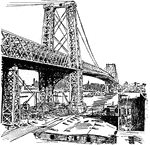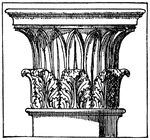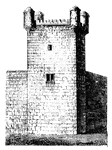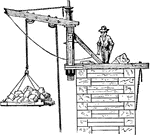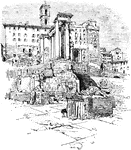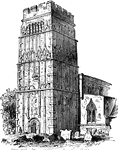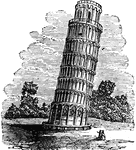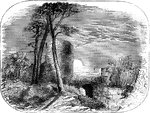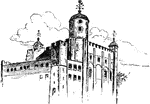
Argonaut, sectional view
Argonaut, sectional view submerged, 1901. Man in conning-tower making observations. Second man steering…

Argonaut, side view
Argonaut, side view submerged, 1901. Key: C-driving wheel, E-rudder and guiding wheel, G-air lock, K-compartment…

Pisa Cathedral
The most remarkable campanile in the world is known everywhere as the "Leaning Tower of Pisa." Its construction…
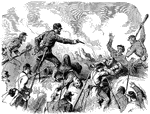
Lieutenant Colonel Morrison
"Heroic conduct of Lieutenant Colonel Morrison, Seventy-Ninth New York Highlanders, on the parapet of…
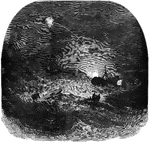
Monitor
"Loss of the Monitor- gallant attempt of the officers and crew of the United States steamer…

Harrison Mansion
"The old Harrison Mansion, Harrison's Landing, Va., the birthplace of President William Henry Harrison,…
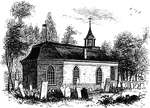
Sleepy Hollow Church
"Ancient Dutch Church in Sleepy Hollow. This view is from the church-yard, looking southwest. The porch…

Bastile Key
"Key of the Bastile. This key of the old Paris prison known as the Bastile, was sent by La Fayette to…

Jamestown Island
"Distant view of Jamestown Island. This view is from the north side of what was once a marsh, but now…
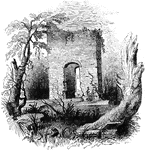
Jamestown Ruins
"Ruins at Jamestown. This view is from the old church-yard, looking toward James River, a glimpse of…

Fort Watson
"Site of Fort Watson."—Lossing, 1851 The Siege of Fort Watson was an American Revolutionary War confrontation…
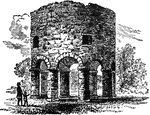
Stone Mill
The Old Stone Mill at Newport, R. I., once believed to have been constructed by men from Iceland. It…
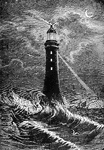
Eddystone Lighthouse
"Eddystone is a group of gneiss rocks, daily submerged by the tide, in the English Channel, 9 miles…

Eiffel Tower
"The Eiffel Tower is a notable structure in Paris, France. The plans for the Paris exposition of 1889…
!["New York is a city in Southern New York; coextensive with New York, Kings, Queens, and Richmond counties, on New York Bay, the Hudson and East rivers, Long Island Sound and the Atlantic Ocean; the first city in the United States in population and commercial importance, and after London, the largest metropolitan center in the world. New York is noted for the number and height of its office buildings. In 1911 there were 50 such structures in occupancy, ranging from 14 to 50 stories in height, or from 179 to 700 feet above ground level, and 16 more were nearing completion. The tallest building was that of the Metropolitan Life Insurance Company, 700 and one quarter feet to top of lantern on its majestic tower. Other conspicuous ones [include the] Park Row, 382 [feet]."—(Charles Leonard-Stuart, 1911)](https://etc.usf.edu/clipart/15600/15666/nyparkrow_15666_mth.gif)
Park Row Building of New York
"New York is a city in Southern New York; coextensive with New York, Kings, Queens, and Richmond counties,…
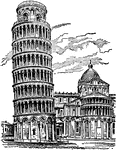
Leaning Tower of Pisa
"The most remarkable buildings in Pisa are the Campo Santo and the belfry, or campanile, a cylindrical…

Tower in Northamptonshire, England
"Saxon Architecture was the style of architecture in use in England from the time of its conversion…

Mobile tower
"They who are within this machine obtain first a view of the place from their high position, and then,…
Roman Siege Works
A Roman Siege Works, with A and B, a double wall; C, C, C, Vineæ; D, an Agger; E, a movable tower;…

Central Tower
Architecture of Cathredals in England. Central Tower in the Norwich Cathedral, Norman Style.

Lighthouse
An elevated structure or tower placed near a seaport or some headland for the purpose of protecting…
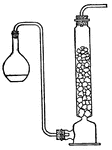
Quicklime
This illustration shows a tower filled with quicklime, being used to filter out gas from water vapor.

Amiens Cathedral
"Plan of Amiens Cathedral. A, Apsidal aisle. B B, Outer aisles of choir. F G, Transepts. H, Central…

Camera Obscura
"Camera obscura strictly signifies a darkened chamber, because the room must be darkened, in order to…

Camera Obscura
"Camera obscura strictly signifies a darkened chamber, because the room must be darkened, in order to…

Towers of London
The White Tower, the square building with turrets on each corner that gave it its name, is actually…

Florence
This view of Florence shows the Duomo (cathedral) on the right and Giotto's Campanile (tower) on the…

The Pulpit of the Baptistry
This piece, by Niccolo Pisano, is the earliest authenticated work by the artist. The sculpture can now…
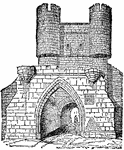
Barbican
A projecting watch tower, or other advanced work, before the gate of a castle or fortified town. The…
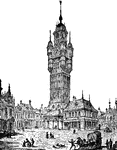
Clock Tower
The Bergues Clock Tower. Bergues, a town in the Department of Nord, France, on the Colme river.
